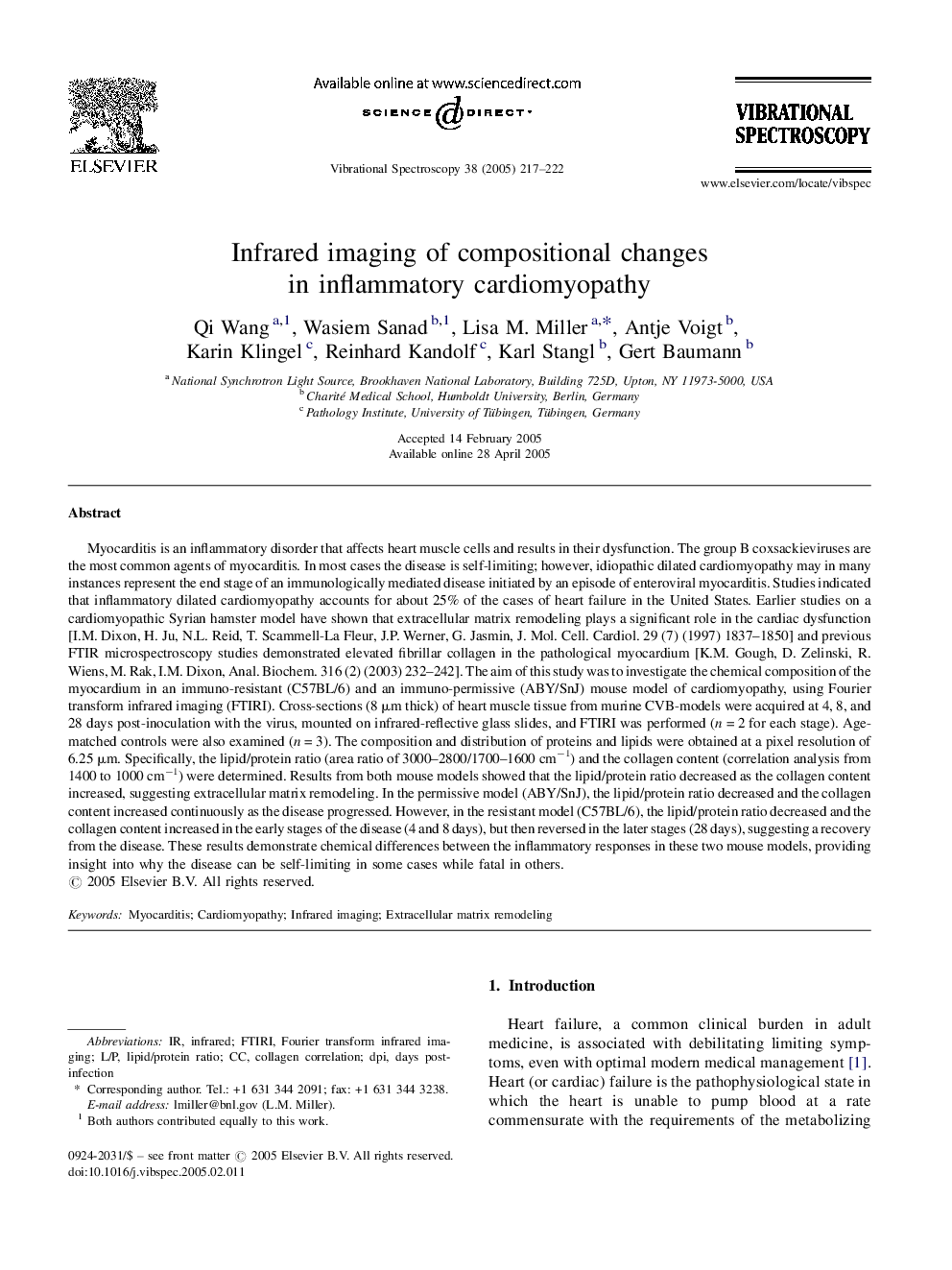| Article ID | Journal | Published Year | Pages | File Type |
|---|---|---|---|---|
| 9757475 | Vibrational Spectroscopy | 2005 | 6 Pages |
Abstract
Myocarditis is an inflammatory disorder that affects heart muscle cells and results in their dysfunction. The group B coxsackieviruses are the most common agents of myocarditis. In most cases the disease is self-limiting; however, idiopathic dilated cardiomyopathy may in many instances represent the end stage of an immunologically mediated disease initiated by an episode of enteroviral myocarditis. Studies indicated that inflammatory dilated cardiomyopathy accounts for about 25% of the cases of heart failure in the United States. Earlier studies on a cardiomyopathic Syrian hamster model have shown that extracellular matrix remodeling plays a significant role in the cardiac dysfunction [I.M. Dixon, H. Ju, N.L. Reid, T. Scammell-La Fleur, J.P. Werner, G. Jasmin, J. Mol. Cell. Cardiol. 29 (7) (1997) 1837-1850] and previous FTIR microspectroscopy studies demonstrated elevated fibrillar collagen in the pathological myocardium [K.M. Gough, D. Zelinski, R. Wiens, M. Rak, I.M. Dixon, Anal. Biochem. 316 (2) (2003) 232-242]. The aim of this study was to investigate the chemical composition of the myocardium in an immuno-resistant (C57BL/6) and an immuno-permissive (ABY/SnJ) mouse model of cardiomyopathy, using Fourier transform infrared imaging (FTIRI). Cross-sections (8 μm thick) of heart muscle tissue from murine CVB-models were acquired at 4, 8, and 28 days post-inoculation with the virus, mounted on infrared-reflective glass slides, and FTIRI was performed (n = 2 for each stage). Age-matched controls were also examined (n = 3). The composition and distribution of proteins and lipids were obtained at a pixel resolution of 6.25 μm. Specifically, the lipid/protein ratio (area ratio of 3000-2800/1700-1600 cmâ1) and the collagen content (correlation analysis from 1400 to 1000 cmâ1) were determined. Results from both mouse models showed that the lipid/protein ratio decreased as the collagen content increased, suggesting extracellular matrix remodeling. In the permissive model (ABY/SnJ), the lipid/protein ratio decreased and the collagen content increased continuously as the disease progressed. However, in the resistant model (C57BL/6), the lipid/protein ratio decreased and the collagen content increased in the early stages of the disease (4 and 8 days), but then reversed in the later stages (28 days), suggesting a recovery from the disease. These results demonstrate chemical differences between the inflammatory responses in these two mouse models, providing insight into why the disease can be self-limiting in some cases while fatal in others.
Keywords
Related Topics
Physical Sciences and Engineering
Chemistry
Analytical Chemistry
Authors
Qi Wang, Wasiem Sanad, Lisa M. Miller, Antje Voigt, Karin Klingel, Reinhard Kandolf, Karl Stangl, Gert Baumann,
